Disclosure: Meeple Mountain received a free copy of this product in exchange for an honest, unbiased review. This review is not intended to be an endorsement.
What are the smells of the Peruvian countryside? Fresh air, crisp meadows, growing crops, llamas? That’s right, Llamaland from veteran designer Phil Walker-Harding drops players into the hills and mountains of Peru and asks them to take control of their estate and grow potatoes, corn, and cacao, along with raising the aforementioned livestock. Can you optimize your estate while still giving yourself room to build up and build out?
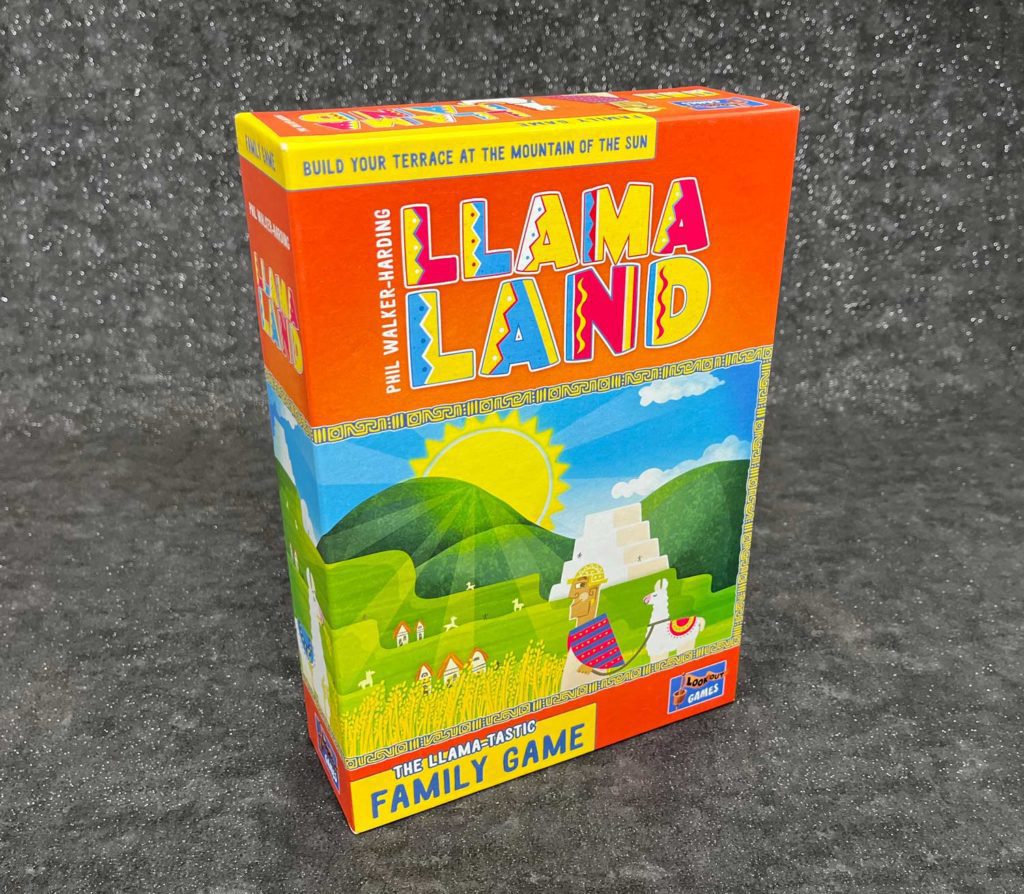
Llamaland Overview
In Llamaland players earn points throughout the game by harvesting crops found on polyomino tiles which they stack to expand their farms. Sell these crops to local merchants in order to earn points and valuable llamas which you can raise on your land. But be careful, as llama enclosures take up space on your property that you might need later on for landscape tile placement. Players can earn additional points by claiming bonuses for crop cards, distance between llama pens, or even the height of various elements on your farm. You can also hire locals to help you make the most of your farm.
Setting up the Countryside
There’s a lot of stuff in this box, and setting up Llamaland takes a bit of time. You need to stack the double-sided polyomino landscape tiles, set out all the coin, crop and llama tokens, shuffle and deal out the three types of llama cards (each based around a single type of crop–more on that later) based on player count as well as select and lay out the bonus cards for this game. Each player gets a starting 4×4 landscape tile, a set of markers in their color, and 3 foundation tiles.
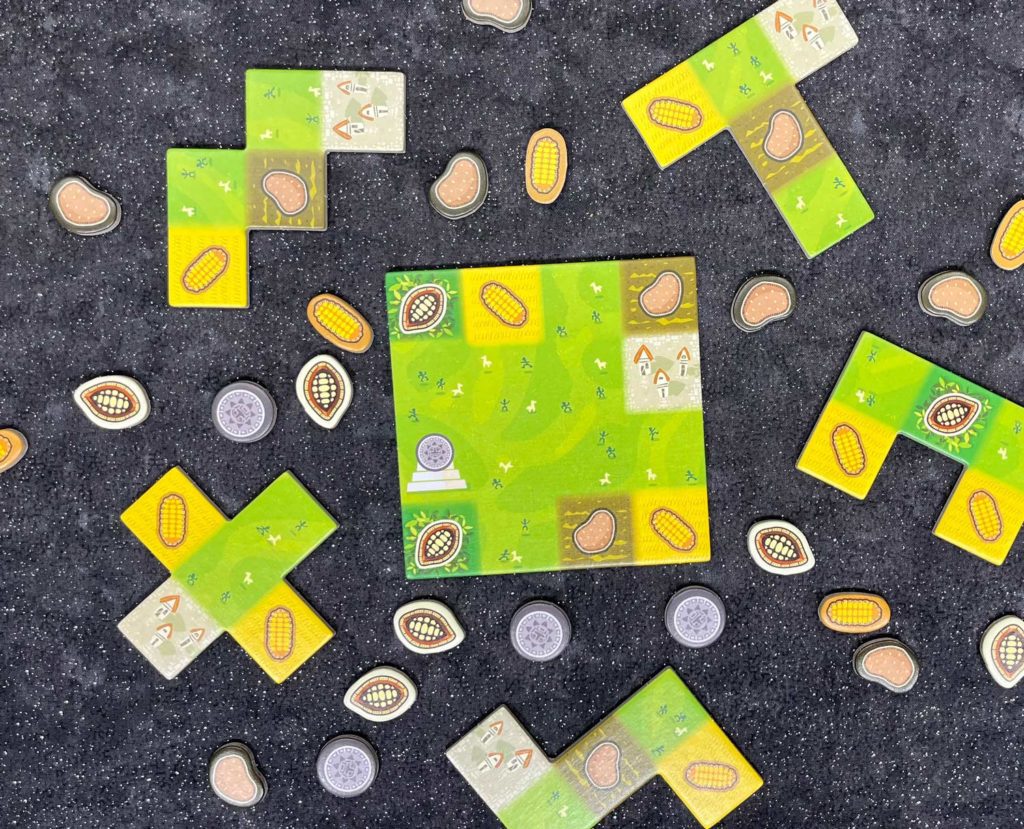
The first player takes the super cool shepherd’s crook and kicks off the game.
A Turn of Llamaland
The first thing you’ll do on every turn is to draw a polyomino landscape tile from one of the 5 stacks. Each tile is a different shape, but each of them are composed of 5 squares. They can be flipped and rotated to your desired orientation, and then they’ll be placed into your estate. Landscape tiles can be placed directly on the table to build out your estate, or they can be placed on top of existing landscape tiles (and your starter tile) to build up your estate. Each time you cover up a crop or coin anywhere on your estate you’ll take that resource from the supply. Each time you cover up a settlement you’ll be able to hire a local. Each local provides some form of rule-breaking ability; generally converting one resource to another or taking extra when you harvest a specific resource.
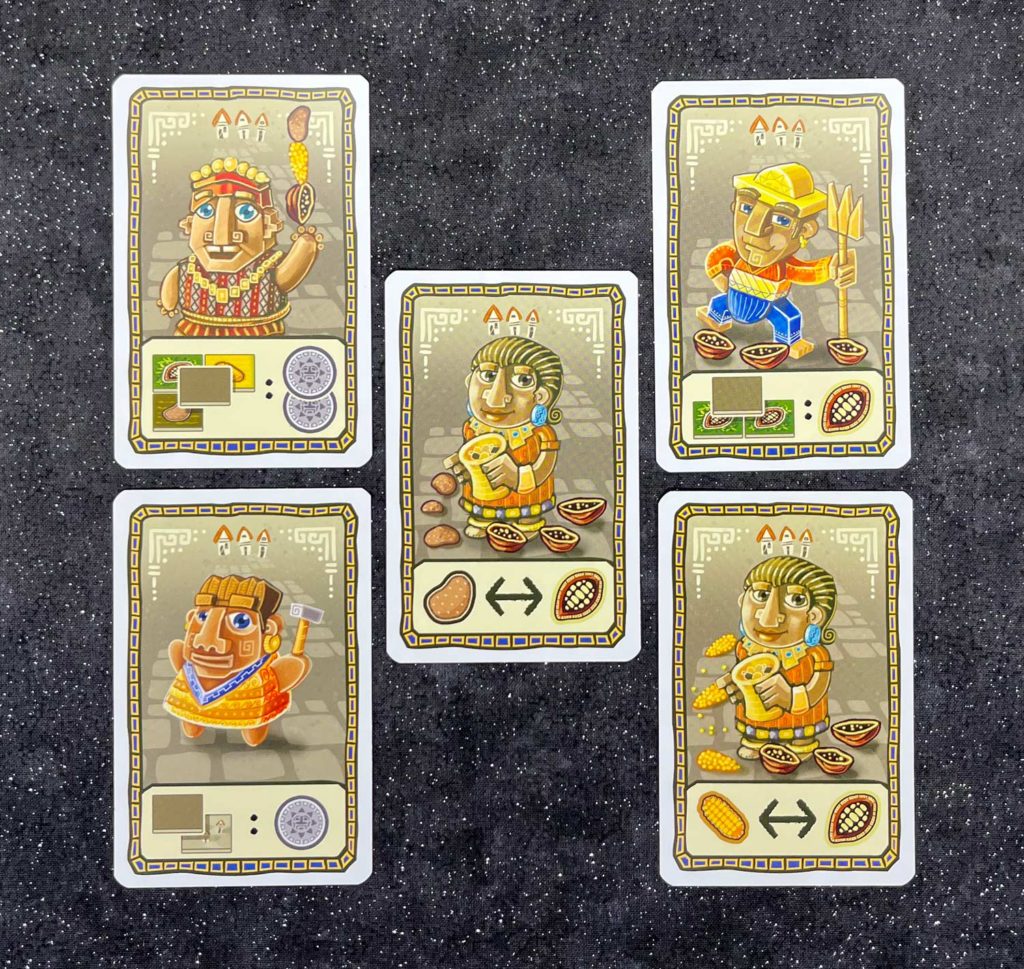
Landscape tiles have specific placement rules, and if you’ve played polyomino games like NMBR 9, then you’re probably already familiar with them: you can’t place one landscape tile directly on top of another tile of the same shape, tiles must be placed directly next to another existing tile in your estate, and tiles can’t have empty space directly underneath them. However your foundation tiles can be used to shore up landscape tiles should you need that one extra space on your board. However any resources covered up by a foundation tile aren’t collected (nice try Frank!).
After placing your landscape tile you may place one of your scoring markers onto one of the bonus cards. You’ll notice that each scoring card has various levels, with point values in descending order. Select one of the scoring conditions that you think you can meet, then drop your marker. If at the end of the game you’ve met that condition, you’ll earn that number of points. You only have 4 scoring markers, so choose wisely.
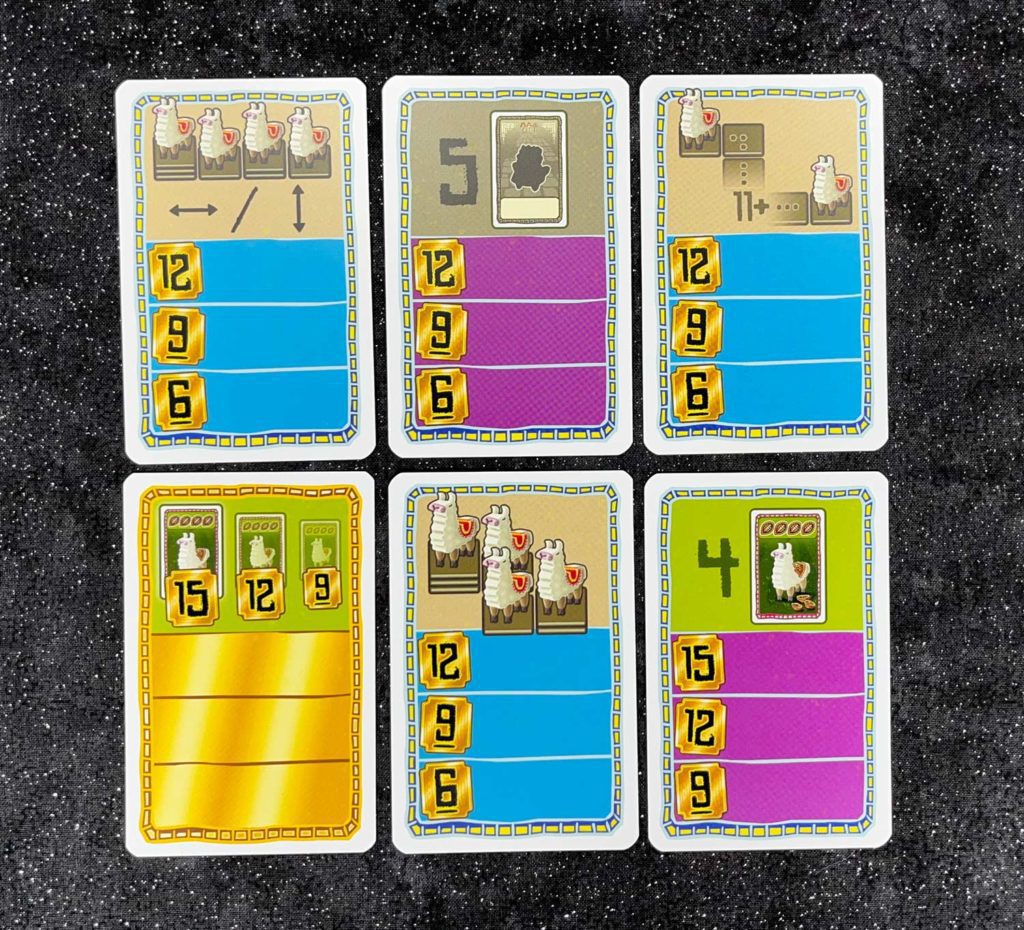
Finally, at the end of your turn, if you have the resources, you can feed a llama and bring it to your estate. Pay the indicated number of resources, take the topmost llama card (the most valuable) from the stack matching the resources you paid, and place a llama token onto one of the grassy squares in your estate featuring a llama. Since many of the bonus cards have something to do with the arrangement of llamas, you’ll want to think carefully about where you put them. Not to mention that once placed, the llama is there permanently, which means your decision also affects future landscape tile placements.
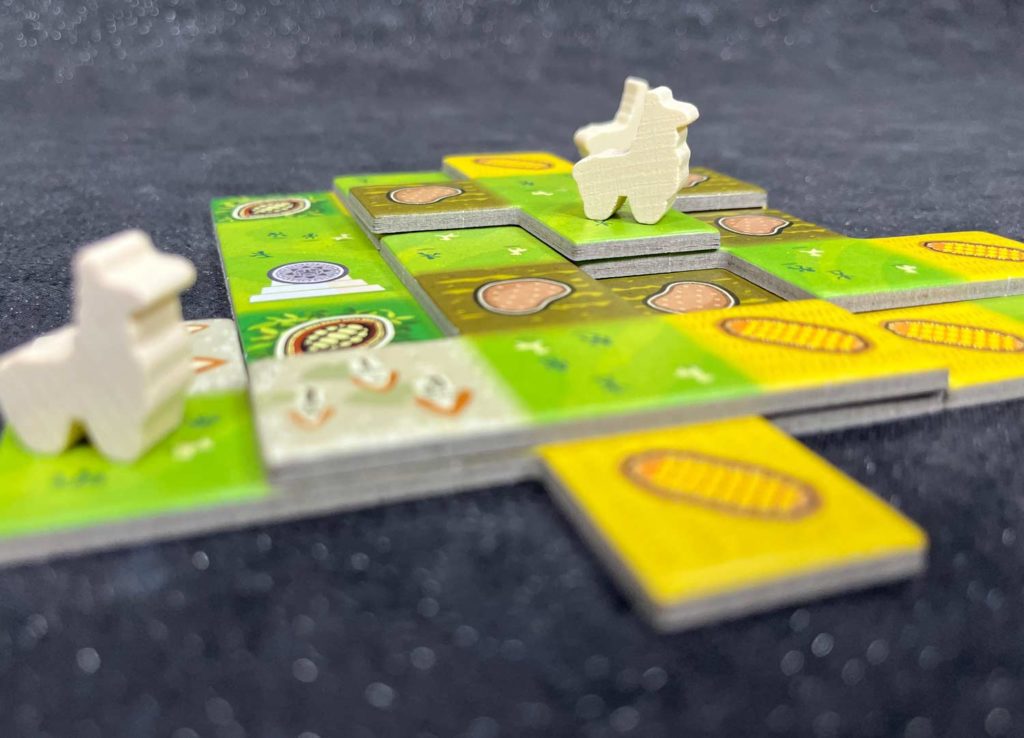
Just another day on the farm right?
Closing Down Llamaland
The game end is triggered when there are only 4 landscape tiles remaining, or when there is only 1 type of llama remaining.
You’ll earn points for llama cards you’ve acquired throughout the game, each marker on a successfully completed bonus card, each remaining crop, and remaining coins at a 1 point for every 2 coins rate.

The player with the most points wins and, if need be, there are several layers of tiebreaker to smooth over the ties.
Final Thoughts on Llamaland
If I were asked to pick one adjective to describe a positive aspect of Llamaland I’d pick “quality”. This is a well produced game, the landscape tiles and resource tokens are thick cardboard and very sturdy, a good choice for the components that you’ll be handling the most throughout the game.
And if I were to pick a negative adjective I’d pick “extra”. There’s a lot going on for what amounts to a tile laying game. There are lots of decks to be shuffled which on the surface seem to provide “input randomization”, but really give you variations on the same thing: Llama cards with a range of 6-12 chosen randomly; bonus cards which offer different scoring conditions at the end of the game, some of which might be directly opposing each other, which means you can only score for one of them; and “local” cards which give you 5 different ways to get one more corn token. And the stated time on the box, 45 minutes, is more like an hour to an hour and 15 minutes when all is said and done.
But let’s back up a bit and talk about expectations. I’ve been a fan of Phil Walker-Harding for years. I think he’s extremely talented at designing games that feel challenging without overstaying their welcome. Sushi Go! Is a 20-30 minute card game with some really clever choices (and its larger sibling Sushi Go Party! is a fantastic example of growing a design whilst keeping the svelte overhead of the original). Imhotep asks players to make tough choices but still keeps the play time under an hour. Llamaland, on the other hand, feels overly complex from the moment you set up the game. And while each individual turn is fairly simple (place 1 time), the complexity snowballs as your estate grows and llamas are placed. The first few turns might be 30 seconds or so, while turns in the last ⅓ of the game might take several minutes as players agonize over the best landscape tile placement, so they can earn that one extra potato, to get that last llama card.
It just doesn’t feel like a Phil Walker-Harding game. But perhaps Phil’s designs are evolving…2018’s Gizmos was a sprawling beast with an engine building mechanism that took over the table. Llamaland doesn’t feel all that dissimilar in weight, even though the gameplay is drastically different. So then the question should be asked, is it me that isn’t evolving?
Llamaland is a fine game, and one which I enjoy playing. But I can’t help feeling that I’m playing someone else’s design.


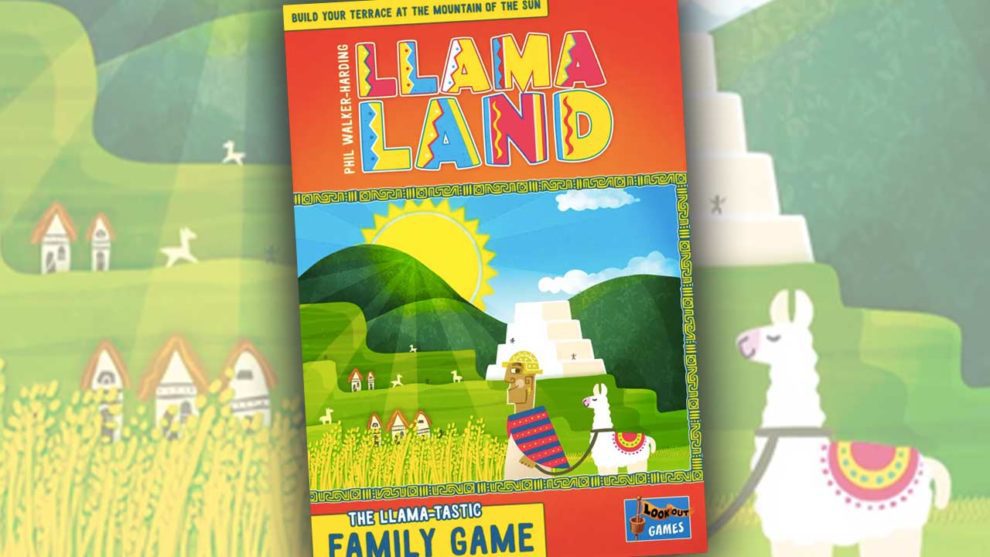








Add Comment